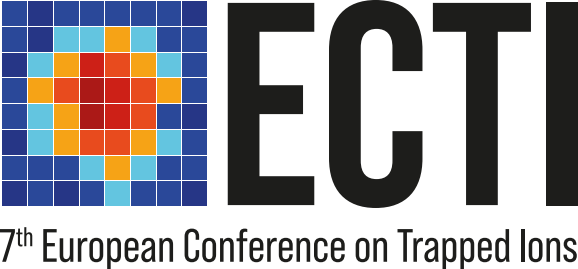Speaker
Description
Ion traps are a promising platform to host a quantum information processor. However, on the road to producing a functional quantum computer, scaling up to hundreds of ions is a challenge.
The established usage of 1D arrays of ion qubits limits connectivity to low ion numbers, thus restricting the quantum advantage.
In this work we develop an ion trap architecture where independent ion strings are located in distinct lattice sites in a 2D array, greatly enhancing connectivity. Conventionally, coupling between ion strings in separate sites, or wells, is realized by first merging them into a single well. We demonstrate an alternate method of ion coupling in which separate wells are brought close but are not merged $[1]$. This is performed along two orthogonal directions: One direction (axial) is achieved through control of DC voltages, and the other (radial) through control of RF fields.
I will review the principles of such a shuttling-based architecture and motivate the advantages of keeping ions in separate trapping sites. For example, the more-than-linear scaling of coupling strength with number of ions per chain makes well-to-well coupling viable for reasonable gate times.
Moreover, for ion strings in separate wells there exists an out-of-phase mode of oscillation that is inherently insensitive to electric field noise, thus exhibiting lower heating rates but retaining the same high coupling strength as that of the in-phase mode. This makes this mode a good candidate for implementing quantum gate operations.
To investigate these advantages, we have developed two microfabricated surface traps, a linear trap designed for DC shuttling based well-to-well coupling, and another consisting of two parallel linear traps designed for RF shuttling.
With the first, we present axial coupling of ion crystals of up to 6 ions per site, and measure coupling rates up to 60 kHz, allowing gate times < 20 $\mu$s. Furthermore, we demonstrate a reduction of heating rate of the out-of-phase mode of oscillation by almost an order of magnitude with respect to the in-phase mode. With the second trap, we demonstrate and characterize radial shuttling of arrays of up to 3 ions. These results provide an important insight into the implementation of fully controllable 2D ion trap lattices, and pave the way to the realization of two dimensional logical encoding of qubits.
$[1]$ M. Harlander et.al. Trapped-ion antennae for the transmission of quantum information, Nature 471 203

